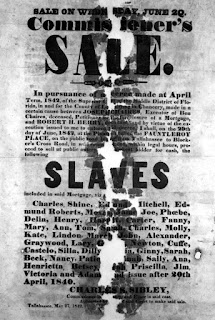This coming weekend, the historic Penn Center, located on St.
Helena Island, South Carolina, is holding its 35th Annual Heritage
Days Festival to celebrate African American Gullah Geechee culture through food,
books, music, educational seminars, arts and crafts, and a parade.
In 1862, the Penn Center was the first school for freed slaves
established on St. Helena Island. In the 1960’s, it hosted interracial
conferences on civil rights and was a retreat site for Dr. Martin Luther King
Jr. and other activists. Now it is a great cultural center renown for
preserving African American culture in the Gullah Geechee region.
Memory Matters
Memory
matters because, as Civil War historian James McPherson says:
“the war is still with
us.” It is not only the great academic works which have looked at
the war from every angle that demonstrate this continuing interest, but it is
the Lincoln associations, the Civil War Round Tables, and the hundreds of
reenactors who meet regularly throughout the year to reenact battle scenes of
days gone by.[i] In
short, memory matters because the past is hardly past, as William Faulkner would
say. It lingers around the contours of our minds and hearts as
any unresolved issue tends to do.
And
unresolved it is as authors Lois Horton and James Horton suggest in their
book, Slavery and Public History: the Tough Stuff Of American
History. From the earliest days of the establishment of American
colonies, they assert:
Slavery provided a racial
floor below which no white person could fall. All whites regardless of social
and economic standing, were encouraged to feel a common racial
bond. Each had a vital interest in maintaining an orderly society
that could control the slaves. Under these circumstances, the rich
seemed to have less to fear from unruly masses at the bottom of white society
so long as the presence of black slavery emphasized their common commitment to
white supremacy. [ii]
Racial
Slavery, then, is at the core of the American experience and its legacy looms
large, or as Ira Berlin confirms,“ slavery is the ground zero of race relations.”[iii] There
is no getting around it or avoiding it. Though there has been much
progress, the dream of a post racial society is just that…a
dream. Ironically, it may in fact be the deepest desire of most of
American society, but we still have a long way to go. Yes,
memory matters because without it, we are left with a shadowy lens of the past
and such cloudiness is an obstacle to racial reconciliation. As the
Gullah proverb reminds us: "Mustekcyear a de root fa heal de
tree." (You need to take care of the root in order to heal the
tree.) Ultimately, memory matters because racial reconciliation matters.
Memory
also matters because West and Central African societies –the origin of the enslaved population- had and still have a great reverence for the
sacred. Honoring the dead is not taken lightly. The
original slave burial ground on the Butler estate in Darien, Georgia, has
almost washed away because of the gradual erosion of the banks of the Altamaha
River. On a boat tour given by a descendant of the Butler
estates, Tiffany Young, one can still see the faded wooden markers sticking out
of the water representing graves of those who worked and built that estate. With
our new understandings of equality and freedom, how do we honor in death those
who were not honored in life? Can we honor them today as their
ancestors would have wanted?
As
descendants of these and the other former estates in the Low Country region
seek to honor their dead, so too they honor the living. Memory is
not just past; it is also the present. It keeps alive the sparks of
the past, and in this case, helps to give voice to the
living. Gullah Geechee communities are indeed rediscovering
their voice as the preservation commission they advocated for has been
established on the Federal level. But they are also participating in
a number of other organizations committed to cultural and land
preservation. From the historic Penn Center in
South Carolina to the St. Simon’s African American Heritage
Coalition and the Sapelo Island Cultural and Revitalization Society, to name a
few, Gullah Geechee residents of the Low Country are making themselves heard.
They are coming out of the shadows of history and telling their vitally
important stories.[iv]..
They are
honoring the rich heritage of their ancestors and sharing this heritage with the
world, or as the Darien Ring Shouters, the musical group which includes
descendants of the Butler plantation say after a stirring retelling of The
Weeping Time Auction, “Hatred is not we teach. Heritage is what we preach.” In
the end, this is why memory matters.
Implicit in these words is a call for much needed
healing.
Anne C. Bailey
[i] McPherson, Battle Cry of Freedom,
viii-ix
[ii] James O. Horton and Lois E. Horton, Slavery
and Public History: The tough stuff of American History, (New York: New
Press, 2006) p.5. See also Edmund Morgan, American Slavery American
Freedom. (NY: Norton, 1975).
[iii] Ira Berlin in Horton, p. 13
[iv] See also Ron and Natalie Daise’s TV show,
“Gullah Gullah Island” and Cornelia Baker’s God, Dr. Buzzard and the
Boleto Man, (NY: Anchor Books, 2000)
Image
courtesy of GreaterDiversity.com




